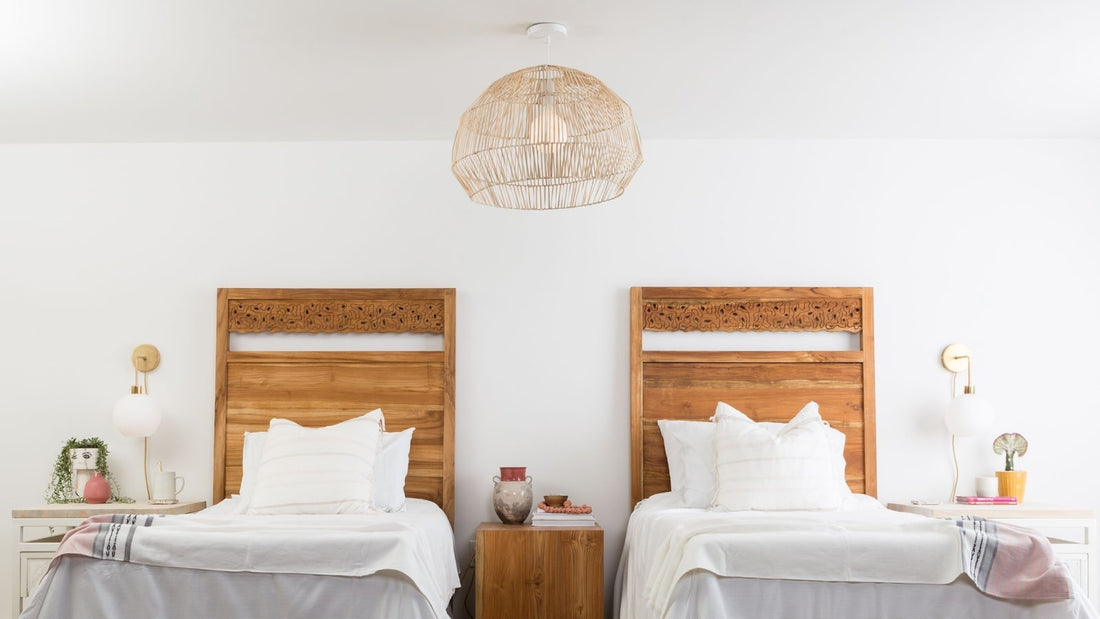Do Light Fixtures Need to Match?
When it comes to lighting up your home, there are tons of options. With so many modern light fixture styles at your fingertips, you have access to the pieces that match your aesthetic, but it can often feel difficult to pin down the aesthetic you want, particularly if you have a variety of different styles you want to explore!
If choosing the right light fixtures for your space sounds like a big task, Color Cord Company is here with tips and tricks to help you mix and match light fixtures. So what are the different options at your disposal? Do light fixtures need to match? What materials work best in your space? Let’s dive in!
Your Lighting Options
There are several things to consider when you mix and match light fixtures, including:
- Type of Light: Task, Ambient, Accent
- Fixture Type: Flush Mounted, Chandelier, Plug-In, Pendant, Wall Sconce
- Material: Glass, Nickel, Wood, Brass, Aluminum
- Finish: Polished, Brushed, Aged, Raw, Satin
- Style: Mid-Century Modern, Retro, Rustic, Boho, Coastal Grandma
Choosing an option from each category will ensure that when you mix and match light fixtures, they still work in a cohesive way.
1. Layer Lighting Types

When you mix and match light fixtures, consider layered lighting the foundation of every design. Layers can create dimension, set the mood, and make any space more versatile by providing different lighting options for every need. To make your lighting even more versatile, set up separate controls for each layer to ensure more flexibility and versatility.
Do light fixtures need to match for layered lighting? The type of fixture may not matter, but you might want the material and finish to look the same.
2. Find Your Focal Point
A focal point is an important part of lighting design, as it draws attention to a single element from which you can build the rest of your design. While anything can work as a focal point, like a piece of art or some decor element, lighting is a great place to start. A stunning chandelier or standout lamp can frame your space and direct the eye.
3. Mix and Match Light Fixture Finishes
If you want a more eclectic look that still creates a seamless appearance, we recommend mixing at least two finish options — but no more than four — in any single room. Explore our complete collections for visual examples of which finish options work best together for new and fun ideas, too. Then, visit our gallery to see how you can accent your lighting choices with other decorative items.
Some of our favorite collections include:
What’s your aesthetic?
4. Sometimes, Simple is Better
Since you have so many options, you might find yourself adding more and more to a single space. A good starting point is sticking to your essentials and adding only what you actually need to illuminate common tasks in that room.
5. But… We Dare You to Try Something New

Even veteran lighting designers should consider trying something new when they mix and match light fixtures! You’re likely redesigning a space, so breathe new life into it by choosing something unexpected. A new lighting style is especially important when you’re changing the function of a room. Whether it’s a bedroom that’s transforming into an office or a living room that’s becoming a dining room, you’ll likely want completely different lighting to make the space comfortable.
6. Don’t Choose Based Just On Looks
Our final recommendation when you mix and match light fixtures is not to choose your design just based on how a fixture looks. You want your fixtures to perform their essential function of lighting your space first — worry about looks second. Consider how your space will be used, choose fixture types based on layered lighting needs, and then, look at fixture aesthetics and finish options.
What’s Next?
If this blog already gave you some ideas, it’s time to browse our collections to mix and match light fixtures for any space. However, if you still need some additional guidance, our blog has tons of articles that explore layered lighting, style definitions, and DIY tips that help you build fixtures from scratch.
And, of course, our team is always here to help with style and wiring advice. If you need some personalized guidance, reach out to our customer care specialists for assistance.

